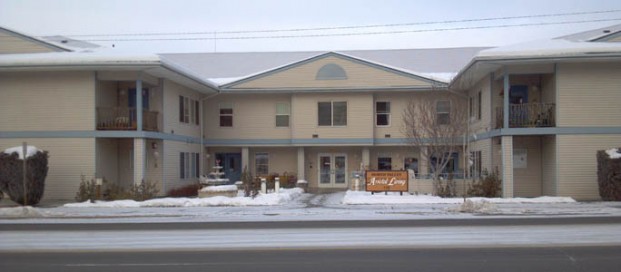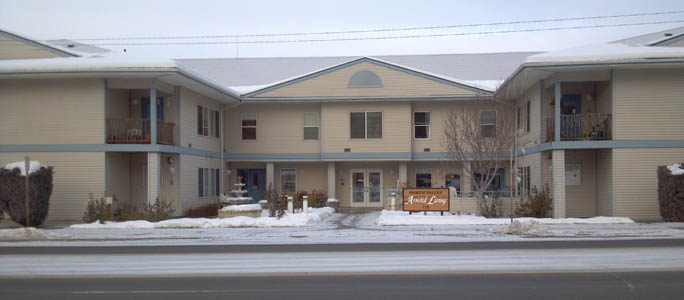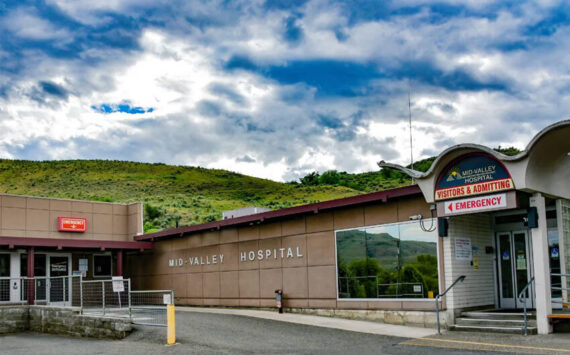
The North Valley Hospital District Board of Commissioners approved a recommendation to close the Assisted Living facility, effective March 31.
TONASKET – The North Valley Assisted Living facility will be closing as of March 31 after the NVH District Board of Commissioners approved a recommendation by senior leadership to close the facility due to chronic financial losses.
That will leave 28 residents looking for a place to live and five full and part-time employees searching for work.
The recommendation, announced by chief administrator Linda Michel at the Thursday, Jan. 10 Board of Commissioners meeting, came after two meetings with a community group that formed in an effort to come up with solutions to the facility’s financial woes, as well as a meeting involving State Representative Shelly Short (R-Addy), who attended via conference call, and a representative for State Rep. Joel Kretz (R-Wauconda).
Michel said that the decision was made in the days following a Jan. 4 meeting between representatives of the community group, formed by Pat and Don Atchison, and the Assisted Living Committee, which was assembled by the hospital district to make a decision on the facility’s future.
With the decision made, the committee was dissolved and a meeting scheduled with the community group for Jan. 18 was canceled.
“There were no immediate solutions,” Michel said. “They talked about runinng a levy, but that would be 18 months before we would get money from that. And that is assuming we could get it passed.
“We have struggled with this for quite awhile and have no immediate solutions. That’s why we asked for their opinions. Once we realized that’s just not going to happen we had to make a decision to close.”
Michel said that there had been no expectation that the legislators would have a solution at hand, either, considering the state’s budget woes.
“They sit on committees that can influence, but they had no solutions, either,” Michel said. “We just wanted to make them aware of what our situation was, not just with Assisted Living but district-wide.”
Michel said that plans for making the transition to close would likely be finalized by the end of this week, including helping displaced residents find alternate facilities.
“We will absolutely help them (find a place to live),” Michel said. “We’re starting that (Monday, Jan. 14). Our extended care social worker has already started contacting places in the area so we can give our residents a list to work from.”
According to North Valley Hospital financial records, Assisted Living has lost more than $800,000 since 2006. The facility has been open since 1998, and Michel, who has been at NVH for two years, said that it didn’t appear that Assisted Living had ever had a break-even year.
“The first few years it was open, it wasn’t making a profit even though we were only paying the interest on the bonds,” Michel said. “So if it would was going to break even, that would have been the time, and it didn’t break even, even then.
“The community will be upset because we won’t go the levy route,” she added. “But there is so much more that we need to do. We have boilers still running on oil. We need more surgery space. If we ran a levy for Assisted Living, then heaven knows when we’d be able to run a levy for our hospital (which serves far more people). And it would only be temporary. Eventually we’d be back in the same fix, levy or no levy.”
Chief Financial Officer Helen Verhasselt said that the Assisted Living was the one area of the hospital district that didn’t receive cost-based reimbursements. The district receives about $60 per patient per day for Medicaid patients – which make up the vast majority of its residents – while the facility currently costs nearly $100 per patient per day to run.
“Each year the rules change for Medicaid,” Verhasselt said. “And as the financial condition of the state worsens they are going to reduce payments for Medicaid. With the economy the way it is, there’s more people to qualify for it as well, so it’s kind of snowballed.”
If the building is used for hospital or extended care services, the district won’t face the same financial restrictions.
“If the hospital is utilizing the building we would be able to put those expenses through on the cost report, so at least a portion of that would be cost-based reimbursed,” Verhasselt said. “Same thing on the Extended Care but it’s a little bit more complicated. There’s also other factors that go into the reimbursement rate. Assisted Living is the only part of the hospital that doesn’t have cost-based reimbursement. There’s only so much you can do to even make it profitable.”
Stopping the financial bleeding will also help stabilize the district’s obligation to pay back Okanogan County the more than $2 million it owes in registered warrants (short-term, low-interest loans).
Okanogan County treasurer Leah McCormack, in a letter to the district in December, said that the county wanted the hospital district to intensify its efforts to pay down its registered warrants (short term loans from the county), which have been in the $2 million range for most of the past year.
“I ask that you take action immediately to turn this issue around,” McCormack wrote. “Registered warrants must be paid down and timeliness needs to be met for doing so. Dependency on the county for registered warrants has to be and will be a thing of the past, in the future.”
McCormack also said in the letter that she was considering raising the interest rate on the existing warrants from 2.5 percent to the prime rate, which is 3.25 percent.
“You won’t notice a sudden change in the warrants,” she said. “But they won’t be going up by hundreds of thousands any more. When we’re losing between $10,000 and $20,000 a month.
“As it transitions over to the hospital or extended care space, the cost reports aren’t done til the following year, so there will potentially be some lag time.”
Michel said that neither a sale to a private entity or a lease agreement would prove to be practical. The district was advised to try to sell the Assisted Living in 2005, before it split into separate hospital and long-term-care divisions.
“Any buyer would have to take on the bond,” Michel said. “And if we were to sell it it would take years to get the property lines straightened out. We share infrastructure (between the hospital and Assisted Living buildings). It’s not built to be an independent, standalone Assisted Living.
“We could lease it, but no one could make a profit with what we would have to charge to include boiler, laundry, food and the bond payment.”
At a recent board meeting, someone remarked that they felt that the board and senior administrators hadn’t been willing to make tough decisions. Michel said this decision, while it would likely make just about everyone unhappy, would hopefully put the hospital district on a path toward financial viability.
“It’s a difficult, difficult situation for everyone involved,” Michel said. “It was not a decision that was taken lightly.”






Comments are closed.